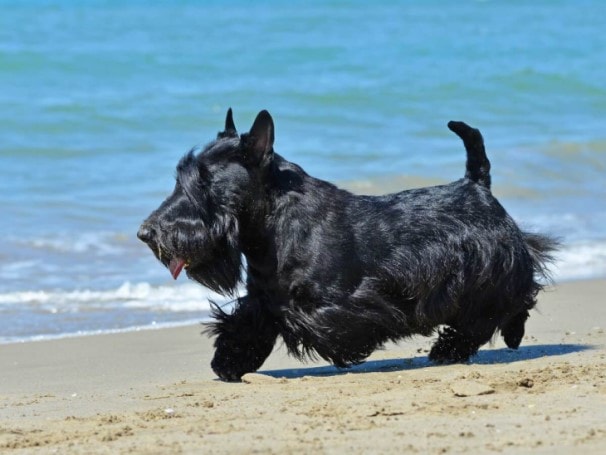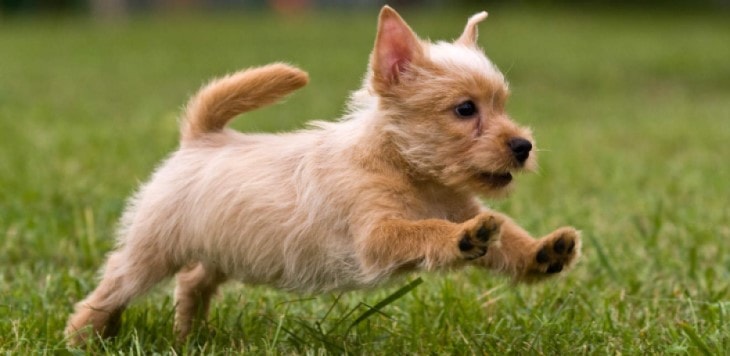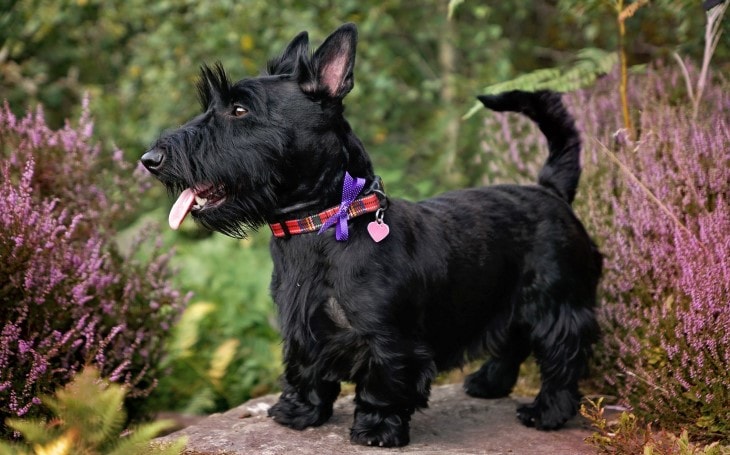Scottish Terrier Dog Breed Information
| Country of Origin | Scotland |
| Nicknames and Other Names | Scottie Aberdeenie |
| Scientific Name | Canis lupus familiaris |
| Breed Type | Purebred |
| Group | Terrier Group |
| Bred For | Hunting rat and badgers |
| Size | Small-sized |
| Recognized By | AKC, FCI, CKC, ANKC, NZKC, UKC, KC |
| Life Span | 12 years |
| Ideal Weight | Male: 19-22 pounds Female: 18-21 pounds |
| Ideal Height | 10 inches (male and female) |
| Fur Type | Broken coat, harsh, wiry outercoat, soft, dense undercoat |
| Common Colors | Black, Brindle, Wheaten, Silver Brindle, Black Brindle |
| Markings | None |
| Availability | Commonly available |
| Achievements | One of the two breeds that had lived more times in the White House |
| Suitable for Apartments | Yes |
| Used in World War | No |
| Most Similar To | Skye Terrier |
The Scottish terrier often defined as an
They are
Origin &History Of Scottish Terrier
The Scottish Terrier is one of the many terrier breeds and were believed to be originated in Scotland and England. They were specially bred for digging out and killing vermin on farms.
The Romans called the Scottish Terrier “terrarii,” which means “workers of the earth” and was derived from terra, the Latin word for Earth. Dogs of this breed were excellent hunters and still hunts today.
The Old Scottish Terriers is thought to be one of the oldest breeds in Scotland and the
Are They Child-Friendly?
Scottish Terrier is fine with children and also been called a nanny. However, like other terriers, this breed also dislikes being pulled or bullied and will react poorly. Therefore, they are not recommended for homes with small children or toddlers. But if your child is well-behaved and approach calm and gently, they will appoint themselves as their guardian.
Temperament, Personality And Behavior
The Scottish Terrier is friendly and playful as long as they are a puppy but as they grow up they become bold, jaunty and steady. They are fearless and independent by nature and are very loyal to their owners. They are suspicious to strangers which makes them good watchdogs.
The Personality of Scottish Terrier is independent and confident and when it comes to

They tend to be aggressive around other dogs and have a strong desire to chase, so they don’t do well with families with other small pets. When outdoors, they should be kept on a leash or in a fenced area at all times.
Trainability
When it comes to training, they tend to be stubborn as they have a mind of their own, but if right motivation techniques are applied they tend to show interest and learns well.
Train them will firm and consistent hand, positive reinforcement in the form of praise and treats are the best ideas to motivate them.
Harsh training and punishment will definitely not work as they are strongminded breed. Their training should be started as soon as possible, don’t wait until they are 6 months old or later you have to deal with a headstrong dog.
Facts – Did You Know?
Amazing facts about Scottish Terrier are:
- The first show to have a class for the Scottish Terrier was in 1860.
- Dwight D. Eisenhower owned two of these breeds named ” Caacie” and “Telek”.
- The first registered Scottish Terrier in America was “Dake” whelped Sept 15, 1884.
- John Naylor is the first to introduce this breed.
Health Issues
| General Health | Healthy |
| Common Health Issues | Craniomandibular Osteopathy, Scottie Cramp, Von Willebrand’s DIsease, Patellar Luxation |
| Hypoallergenic | Yes |
| Vaccination Required | Rabies, Canine Distemper, Canine Parvovirus, Canine Parainfluenza, Canine Coronavirus, Leptospirosis, Kennel Cough |
| Shedding | None to Minimal |
| Drooling | Low Drooler |
| Grooming | Average Grooming Required |
| Weight Gain Potential | Average |
| Separation Anxiety | Moderate Chance |
| Allergies | None |
| Diets and Supplements | Protein: 23% Fat: 8% Fish Oil Digestive Enzymes Multivitamins |
Scottish Terriers are generally healthy dogs, but like all other breeds of dogs, they’re prone to certain conditions and diseases, which include:
- Scottie cramp is a common disorder in Scottish Terriers and the symptoms of Scottie cramp occur only when the dog is stressed or overstimulated, such as during exercise, mating, or fights.
- Von Willebrand’s disease: An inherited blood disorder that interferes with the blood’s ability to clot.
- Craniomandibular osteopathy affects several skull bones. While a puppy is growing, the skull bones become irregularly enlarged.
Color
Scottish Terrier are found three in colors, they are:
- Black
- Brindle
- Wheaten
Puppies

Image Via The Happy Puppy Site
The Scottish Terrier can give birth up to 2-5 puppies at a time. If you are willing to own a Scottish Terrier puppy, then you need to spend somewhere between $800-$1000.
Which Dogs Are They Similar To?
Dogs similar to Scottish Terrier are:
- Skye Terrier
- Kerry Blue Terrier
- Soft Coated Wheaten Terrier
- West Highland White Terrier
- Cairn Terrier
Visit Doglime For More Dog Breed Information.
Tags










